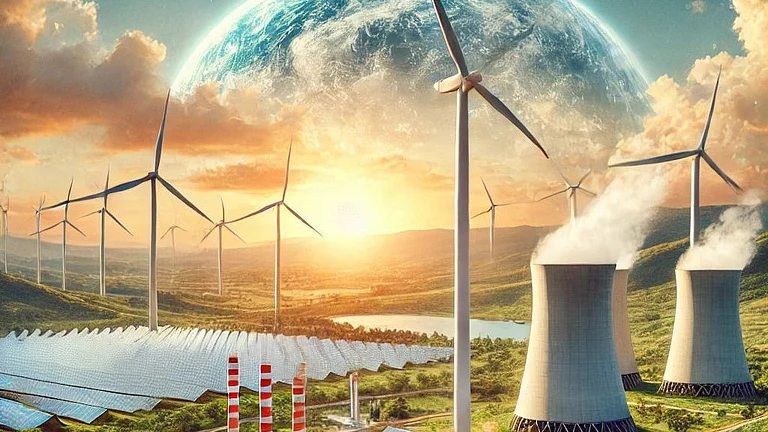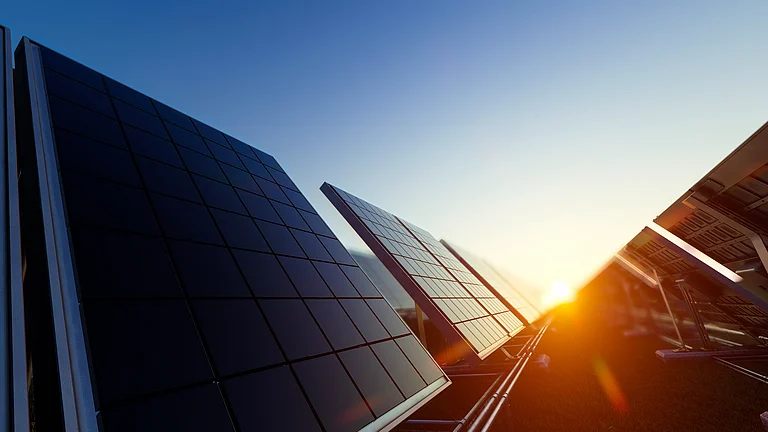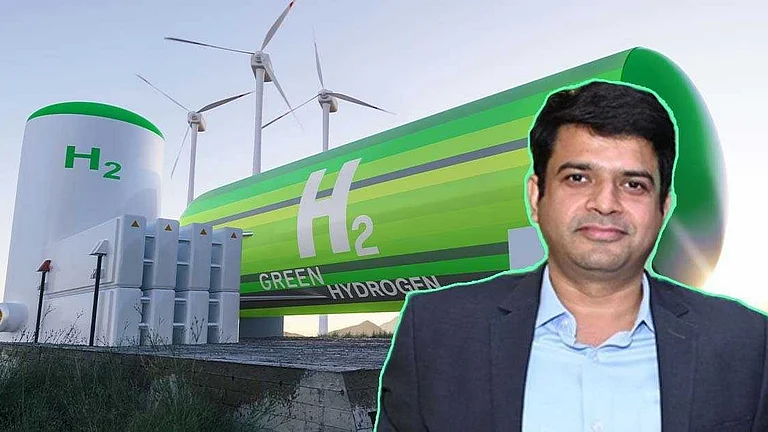Green hydrogen occupies the cornerstone of India’s decarbonisation efforts. In the virtual keynote address at the second International Conference on Green Hydrogen at New Delhi in October, Prime Minister Narendra Modi said, "We aim to position India as a global hub for the production, utilisation, and export of green hydrogen. The National Green Hydrogen Mission, launched in 2023, is a critical step towards realising this ambition. It will drive innovation, build infrastructure, stimulate industry growth, and attract investment in the green hydrogen sector.”
India has set an ambitious target of producing 5mn tonnes per annum (MTPA) of green hydrogen by 2030, with an aim to mitigate 50mn tonnes of carbon dioxide and reduce energy imports by Rs 1 lakh crore.
Electrolysers play a key role in the production process of green hydrogen and constitute 30–50 percent of the production cost, states a recent study by the think tank Council on Energy, Environment, and Water (CEEW), How Can Hydrogen Electrolysers be Made in India. Creating a robust system of electrolyser manufacturing can help India tap into both domestic and international demand for electrolysers.
Outlook Business decodes the challenges and opportunities for electrolyser manufacturing in India:
Why are electrolysers key to unlocking India’s green hydrogen potential?
Although electrolysers have been around for decades, the evolution of the green hydrogen economy has significantly increased the demand for them.
Green hydrogen is produced in an electrolyser, and as the name suggests, through the process of electrolysis. This involves the separation of water into hydrogen and oxygen. The process is powered by renewable energy sources, such as solar, wind, or hydropower.
The CEEW study points out that India’s ability to produce green hydrogen at a globally competitive price and volume depends on using locally sourced components to lower input costs. The electrolyser market in India is expected to grow to 20 gigawatts (GW) by 2030, 112 GW by 2040 and 226 GW by 2050, as per NITI Aayog estimates (2022).
A robust domestic electrolyser manufacturing ecosystem could help unlock export opportunities. The global demand for electrolysers is expected to be 590 GW by 2030, reaching an estimated 3,300 GW by 2050 (International Energy Agency 2023).
Recognising the importance of electrolysers in the green hydrogen ecosystem, the Government of India has proposed a production-linked incentive (PLI) scheme for manufacturing electrolysers. The National Green Hydrogen Mission (NGHM) has created a budgetary provision of Rs 4,440 crore for PLI on electrolyser under the Strategic Interventions for Green Hydrogen Transition (SIGHT) scheme to boost India’s production capacity for green hydrogen by 3 GW, up from the current capacity of 1.5 GW in 2023.
What are the challenges and opportunities in lowering the manufacturing cost for electrolysers?
Electrolysers are of three kinds, based on the process used to separate oxygen and hydrogen. These are proton exchange membrane (PEM), alkaline, and solid oxide electolyser cells (SOECs).
The CEEW study, in its assessment of the potential for indigenisation in electrolyser manufacturing in India, categorises manufacturing cost into components that are already indigenous, components that can be indigenised with some effort and components that cannot be indigenised due to technology and material constraints.
The research also finds that 72 percent of system manufacturing cost, 80 percent of alkaline manufacturing cost and 61 percent of SOE manufacturing cost can readily be indigenised.
The cost of electrolysers can be divided into three components, namely material, manufacturing, and balance of plant (BoP) costs. All BoP components, including power converters and heat exchangers, are currently produced in India. However, certain components, such as membranes, are imported. Several essential minerals like platinum and iridium needed to build these electrolysers are also import-dependent.
What are some of the policy recommendations to help India up its electrolyser manufacturing game?
India needs to secure a competitive edge by investing in developing indigenous technologies that increase efficiency and reduce the cost of green hydrogen production. The country also needs to increase the knowledge base around newer electrolyser technologies.
To facilitate indigenous production of electrolysers, the country must ensure that all finished components for electrolysers are produced domestically, even if raw materials are imported, the study said.
India needs to focus on research to reduce import dependence on critical minerals by developing their alternatives. Similarly, it has to prioritise the development of advanced membrane technologies to reduce import dependency.
The study added that the Ministry of New and Renewable Energy (MNRE) has to play a key role in developing the ecosystem of electrolyser manufacturing. It must act as the nodal agency and coordinate with other ministries. Some of the other issues MNRE could work on include developing a compendium of all component suppliers related to manufacturing electrolysers and placing it in the public domain, setting up an electrolyser testing facility for development and optimisation of indigenous electrolyser designs and supporting the creation of power electronics for electrolysers through existing government schemes.
Further, research and development projects under NGHM should have well-defined technology development targets, the study said.





























